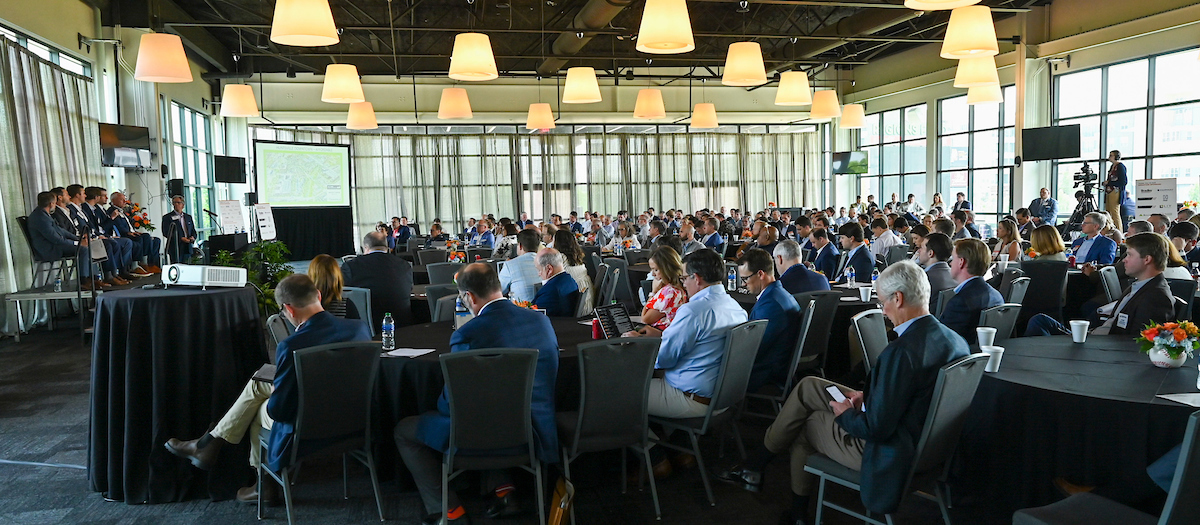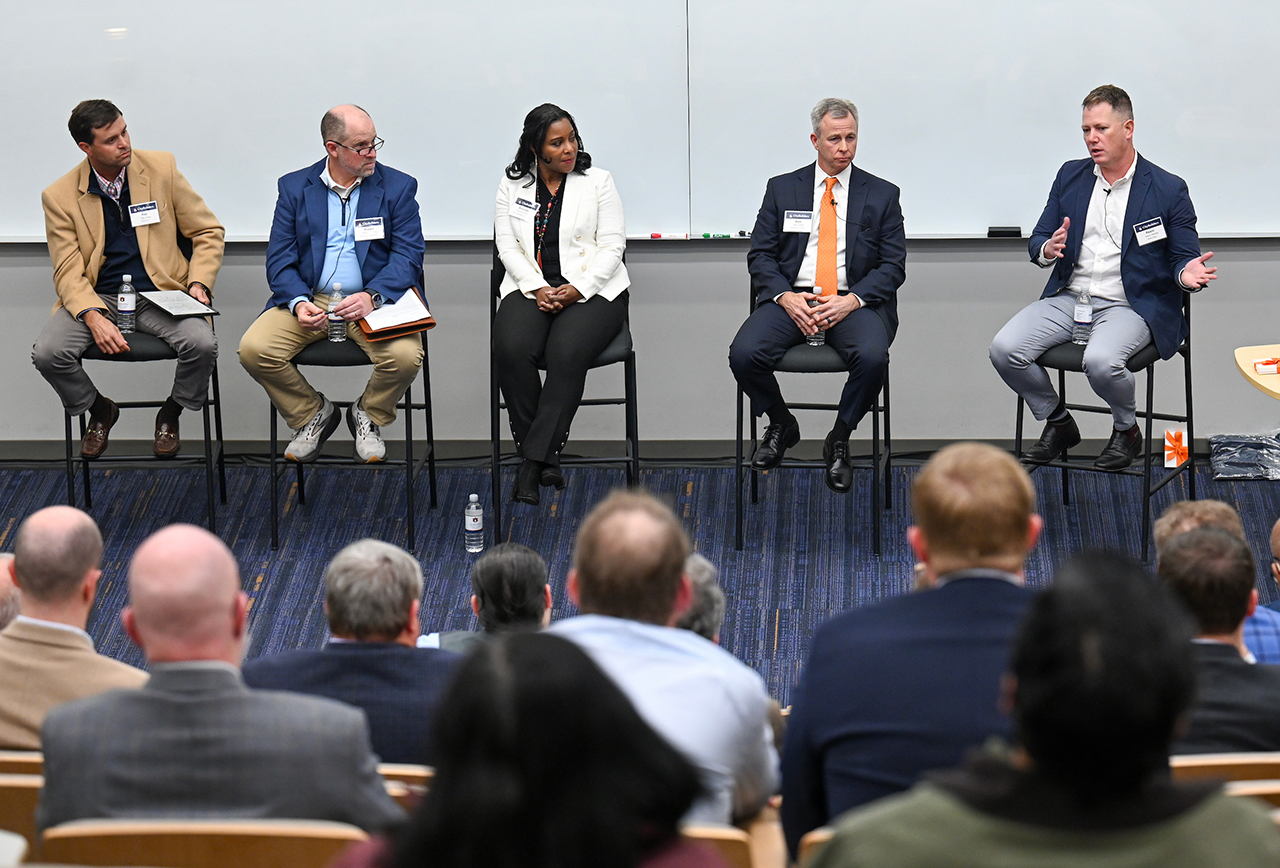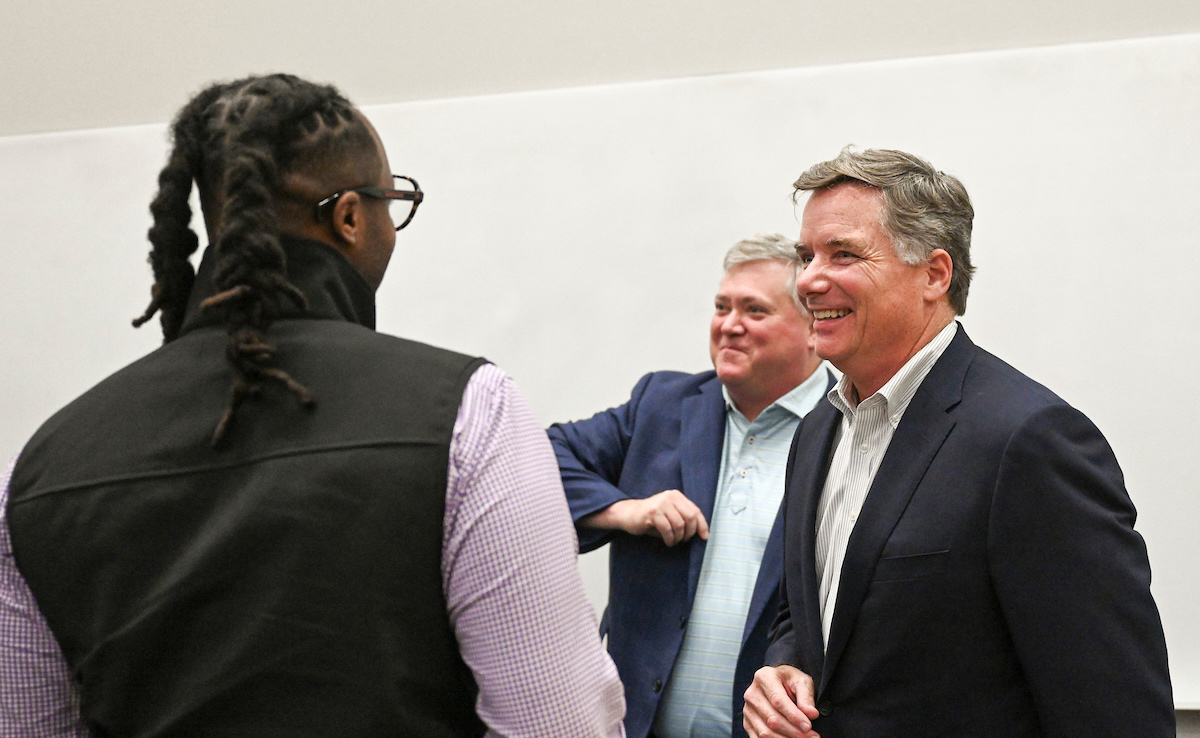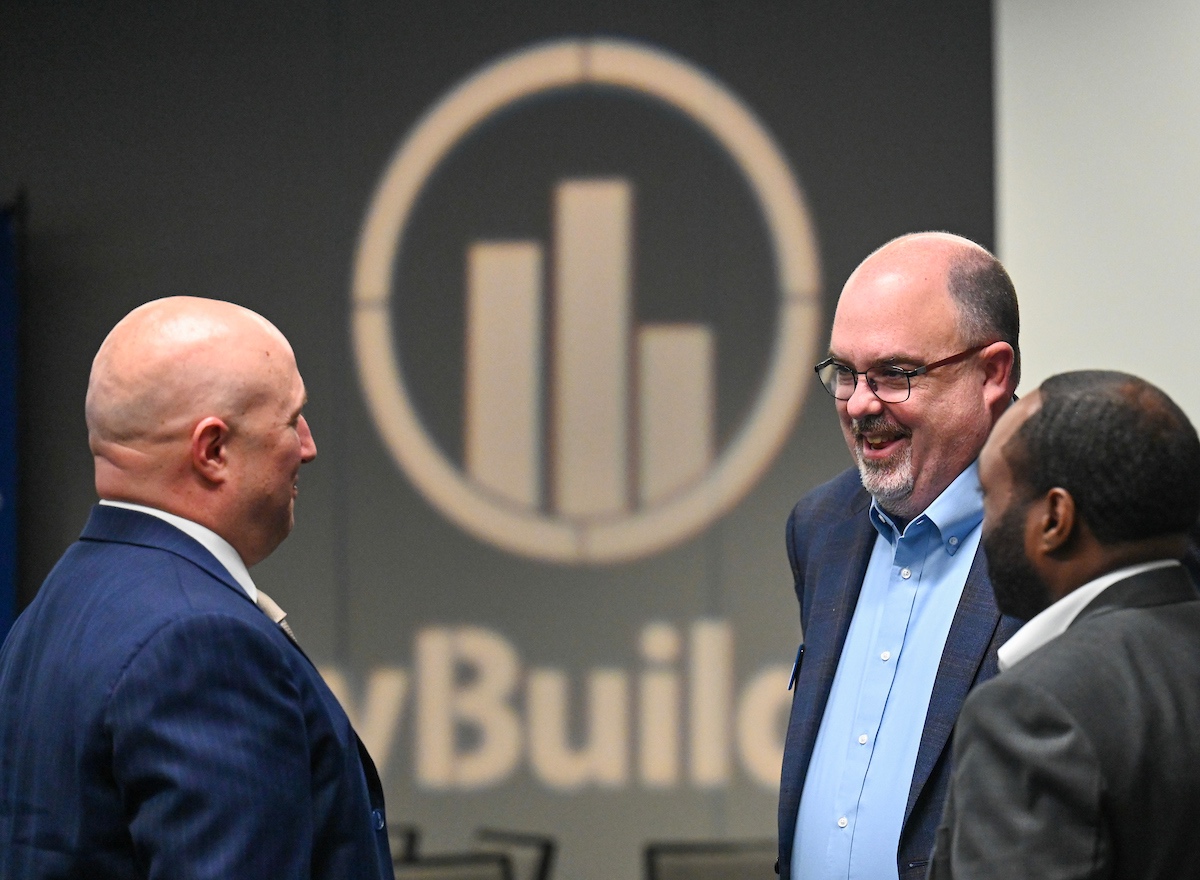Experts at Auburn University’s CityBuilders Symposium outline key economic factors
driving industry growth across all geographic regions of the state
Auburn University recently hosted its fifth annual gathering of some of the most prominent
real estate professionals in the Southeast at Birmingham, Alabama’s Regions Field.
Entitled The Auburn CityBuilders Future of Commercial Real Estate in Alabama, this year’s event brought together more than 325 attendees and presenters to discuss
the prospects for commercial real estate development in all four regions of the state.
Hosted by Auburn’s Institute for Real Estate Development (IRED), the view that emerged from the more than 30 commercial real estate developers,
capital providers, suppliers, and economic development officials on all five of this
year’s CityBuilders panels of experts is that commercial real estate development in
Alabama is poised for measured, increasingly broad-based growth during the second
half of 2024 and beyond.
Connecting industry leaders
IRED is a partnership between Auburn’s Harbert College of Business and the College of Architecture, Design and Construction and is designed to strengthen and grow the university's already extensive relationships
with the real estate professional community in Alabama and across the South.
According to John Benner, executive director of IRED, “CityBuilders’ focus on connecting all members of the
expansive Auburn real estate family provides our collective stakeholders a tremendous
edge in the marketplace, positioning Auburn’s Institute for Real Estate Development
among the pre-eminent sources of thought leaders across our industry.”
Different regions, similar prospects
This year’s CityBuilders featured a Capital Markets Panel comprised of commercial
real estate finance experts and four regional panels covering Southern Alabama, Northern
Alabama, Central Alabama and the I-85 Corridor.
As Greg Winchester, founder and CEO of Summit Investors and a long-time supporter of CityBuilders likes
to say, “nothing gets built without financing.” Members of the Capital Markets panel,
moderated by Pat Henry, president of Daniel Corporation, were in agreement that while the current interest rate environment remains cloudy
at best, there is hope for a gradual improvement.
But inflation, says Henry, is going to remain high, “there's just no way around that.
First of all, the money that we're dumping into the economy leads to inflated prices,
including construction materials. And the second thing – although it doesn’t get a
ton of press – is that benefits from globalization are slowing. But deals are getting
done in Alabama, where the fundamentals of local economies are driving population
migration and growth.”
Northern Alabama is thriving
Northern Alabama is a region dominated by continued strong real estate development
activity in and around Huntsville, much of it related to the Redstone Arsenal, the United States Army installation located close by. Redstone Arsenal is a federal
campus located on 40,000 acres with roughly 40,000 people working there – only about
a thousand of whom are actually troops.
 |
David Wilson (right), senior director of investment sales at Berkadia, moderates the
CityBuilders panel on the Northern Alabama region. Photo by Julie Bennett
|
As James Lomax, vice president of asset management & leasing for COPT Defense Properties in Huntsville, noted, Redstone Arsenal is the primary economic engine in the region.
“Redstone is really its own city within a city that’s actually responsible for 10%
of the GDP of the entire state of Alabama – mind blowing when you think about it,”
says Lomax. “Yes, it’s an Army base, but you also have the Air Force, the Navy and
the Marines. You have the Department of Justice there, along with the Bureau of Alcohol,
Tobacco and Firearms and the second largest FBI installation in the United States.”
“That’s a lot of economic activity that requires specialized facilities, workforce
housing and retail services. And in today’s amplified global threat environment, there’s
little expectation that will change anytime soon.”
Central Alabama – healthcare flourishing
The market for commercial real estate development in Central Alabama – Birmingham
in particular – is driven by three primary factors – healthcare, education and sports.
With those market segments as the foundation, commercial real estate development in
Central Alabama is growing strong.
Moderator Dan Lovell, director of Graham & Co., pointed out that “we are literally living in the golden age of the southeast” when
it comes to economic growth. Although we are in the same basic economic cycle as the
rest of the country, we here in the southeast appear to be somewhat insulated. And
that is certainly true in Birmingham.”
Take it from panelist Perry White, principal and chief operating officer at Johnson Development. “We're going to need hospitals, we're going to need physician groups, we're going
to need specialized facilities that deliver medical care to the area’s growing population.
From UAB Hospital to surrounding clinics and treatment centers, expanding needs mean
additional development.”
Add in a growing higher education market fueled by UAB and others along with the economic
engine of sports complexes like Protective Field and Regions Field, and the future continues to look bright for commercial real estate development in
Central Alabama.
Southern Alabama – supply chain access grows
According to panel moderator Mike Rogers, president at Rogers & Willard, Inc., “it is a great time to be in South Alabama. We've got the Novelis plant in Baldwin County – a $4.1 billion investment. The city of Mobile has just announced
a youth city center project that will probably end up in $300 to $500 million of development in and around that
facility. And in one of the rare instances where an airport is moving from the suburbs
to an urban location – the airport project is another $300 million-plus investment.”
Rogers also noted that the deepening and widening of the shipping channel is a $400
million investment that’s fueling the expansion of the Port of Mobile. “And then there’s the bridge project, which we all hope is coming,” says Rogers.
“That is another $3 billion-plus investment in our area. With Airbus operating in Mobile since 2002 doing defense work and the company assembling commercial
aircraft here since 2013, they've have spent over a billion dollars to date in Mobile.
That will only continue to grow.”
Auburn and the I-85 corridor
Closer to home, Dr. Steve Taylor, senior vice president for research and economic development at Auburn University, pointed to the investments Auburn University has made in terms of facilities, land,
infrastructure and access to tremendous research being conducted at Auburn as key
drivers of commercial real estate growth in the region.
“Many of you already know this, but just as a reminder, we have about 33,000 students
attending Auburn today,” said Taylor, “including 6,800 students in the Harbert College of Business, another 6,300 students in the Samuel Ginn College of Engineering and 1,800 in the College of Architecture, Design and Construction. So, when we talk about workforce development in the area, that’s largely us. We’re
providing the trained workforce the private sector here needs.”
“Equally important, we did about $350 million in research last year from externally
funded contracts that come to the University from the federal government and the private
sector, and that brings companies that want to locate next to a laboratory that they're
collaborating with. The public-private partnerships we develop often require Class
A office space or a mixture of office space, lab space and high-bay research space.
The specialized space needed to handle all that research is valuable, and we have
it.”
“And if we don’t have what you need, we have a place for you to build it.”
###
Learn more about Auburn's Institute for Real Estate Development.

 Degrees & Programs
Degrees & Programs
 Faculty & Staff
Faculty & Staff
 Career Development
Career Development
 Recruiters & Industry
Recruiters & Industry




